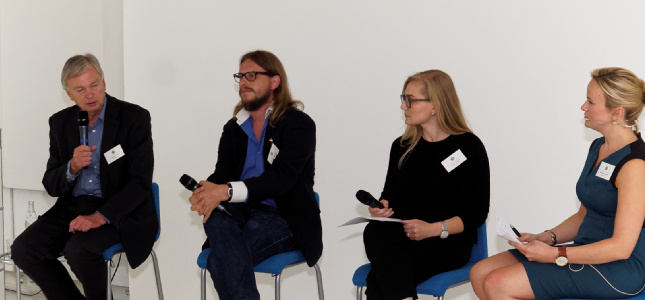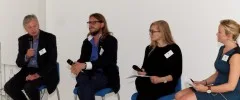The next panel was on VR and the first responder was Angus Cameron who is CEO of Vision3, a developer of 3D movies. There is a lot of buzz about VR systems and there will soon be three new VR systems available in the market. A lot of 3D professionals are moving into VR, as 3D is an immersive technology and that is also the nature of VR. VR is not just about the image and volumes and spaces. It’s about how you interact with objects as well as adding sound and touch so that the viewer becomes immersed. There is no frame as there is in other mediums.
VR is as much theatre as it is film – for example, quick cuts, as seen in video or film, don’t really work. The lack of a frame changes how content needs to be produced. The way that material is shot will change.
There is a challenge to produce good quality. Like 3D, there will be a rush to get content out and onto the market, but it may not be good and that may drive consumers away. Especially in the low end, content is simply not engaging enough at the moment. Cameron said that this is about the “choreography”. As with 3D, there is a “Wow” moment, but quickly after that, interest in VR can wane. In 3D, only a few movies really exploited and produced high quality 3D.

Cameron said that his company has converted 2D spherical content to stereo content with full 3D, but this is very challenging because of distortions, resolution and stitching of objects in spherical video. Effectively, in VR, the viewer is concentrating on just a small part of the image and that also is a strain in terms of resolution. Ideally, you would have a lot more resolution to play with.
The company is working with others in Europe to try to develop VR, including the Fraunhofer, but at the moment most of the work is happening in the US. However, there are a lot of potential pitfalls ahead.
Alissia Iljaitcsch is a director of Vectorform; Soenke Kirchhof is from reallife film international and they joined the next panel.
The Fraunhofer HHI has used its omnicam 360 degree camera to capture a live concert a couple of weeks ago and the results have been good. One classical concert was recorded from a couple of metres above the conductor, where no audience members can be and give an amazing opportunity to look all around from the conductor’s point of view.
Cameras with high quality are big, heavy and expensive, when you need six or so, but now new cameras are being used to achieve this effect. There is also a project at the HHI to develop a stereo 3D OmniCam in addition to the 2D version.
Kirchhof said that there are a number of ways of configuring cameras, but eventually there may be a new configuration in the future. At the moment the Fraunhofer system uses mirrors to get almost seamless images and, at the moment, ‘star’ configurations are very difficult if you need high quality.
There are a lot of projects for VR, but these are early days. Reallife has worked in opera and theatre and has also worked with Samsung and BMW to develop home and driving experiences.
Iljaitcsch said her company is working with automotive companies. Transporting people to other, virtual, environments is likely to be an early application. There will be a big drop in the cost barriers and these have already reduced the barriers to entry in VR. GoPros and other low cost cameras have allowed an acceleration in market adoption.
Iijaitcsch explained that some of the most powerful VR experiences she has had have been very close up, for example a VR of singers in a choir around the viewer, rather than big event spectaculars (we had a demo of this later – it is compelling). VR needs a lot of different disciplines and the grammar of production will need to be developed.
Kirchhof said that it is nice to use high quality cameras, but in practice, other factors come into play and for the BMW project, the firm used just low-end GoPros as they gave the best results overall because of shake reduction etc.

